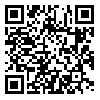Volume 17, Issue 5 (12-2023)
payavard 2023, 17(5): 464-483 |
Back to browse issues page
Ethics code: IR.TUMS.SPH.REC.1402.040
Download citation:
BibTeX | RIS | EndNote | Medlars | ProCite | Reference Manager | RefWorks
Send citation to:



BibTeX | RIS | EndNote | Medlars | ProCite | Reference Manager | RefWorks
Send citation to:
Safdari R, Rostam Niakan Kalhori S, Shamsi A, Hajizadegan H. Conceptual Design of Self-Care Application for after Coronary Artery Bypass Surgery. payavard 2023; 17 (5) :464-483
URL: http://payavard.tums.ac.ir/article-1-7658-en.html
URL: http://payavard.tums.ac.ir/article-1-7658-en.html
1- Professor, Department of Health Information Management, School of Allied Medical Sciences, Tehran University of Medical Sciences, Tehran, Iran
2- Associate Professor, , Department of Health Information Management, School of Allied Medical Sciences, Tehran University of Medical Sciences, Tehran, Iran
3- Associate Professor, Department of Anesthesia, School of Allied Medical Sciences, Nursing and Midwifery Care Research Center, Tehran University of Medical Sciences, Tehran, Iran
4- Master of Sciences Student in Health Information Technology, School of Allied Medical Sciences, Tehran University of Medical Sciences, Tehran, Iran ,homa.hajizadegan@gmail.com
2- Associate Professor, , Department of Health Information Management, School of Allied Medical Sciences, Tehran University of Medical Sciences, Tehran, Iran
3- Associate Professor, Department of Anesthesia, School of Allied Medical Sciences, Nursing and Midwifery Care Research Center, Tehran University of Medical Sciences, Tehran, Iran
4- Master of Sciences Student in Health Information Technology, School of Allied Medical Sciences, Tehran University of Medical Sciences, Tehran, Iran ,
Abstract: (746 Views)
Background and Aim: Atherosclerosis of coronary arteries is the most common heart disease and indication of coronary artery bypass graft(CABG). After CABG, patients need proper self-care and lifestyle changes to increase their quality of life. The present research aimed to the conceptual design of self-care Android software, focusing on the third phase of cardiac rehabilitation.
Materials and Methods: This descriptive research has been carried out in two main phases and a total of six steps in order to assess the informational and functional needs of self-care software and design its conceptual model. After searching in reliable scientific sources and guidelines and checking the available Persian software, through the content validity index questionnaire of Lavshe, Welts and Bassel, 23 people from the medical staff with a history of caring for heart patients participated in the step of determining the requirements and the results were analyzed using SPSS Software. Descriptive analysis was done. Finally, the software model was prepared using integrated modeling language and th mind map was drawn.
Results: Sixty two items were identified in 6 general categories (personal information, medical records, interventions, personal health record, essential information, emergency communication). In the phase of determining the requirements by the experts, 52 items were accepted and 10 items were included in the conceptual model of the application program with minor changes and revisions.
Conclusion: Using mobile health in self-care and cardiac rehabilitation will be a suitable solution in order to increase treatment, follow-up and optimal continuation of self-care in patients. By having different functions, this tool can facilitate lifestyle change and help patients in secondary prevention of cardiovascular events and improve their health.
Materials and Methods: This descriptive research has been carried out in two main phases and a total of six steps in order to assess the informational and functional needs of self-care software and design its conceptual model. After searching in reliable scientific sources and guidelines and checking the available Persian software, through the content validity index questionnaire of Lavshe, Welts and Bassel, 23 people from the medical staff with a history of caring for heart patients participated in the step of determining the requirements and the results were analyzed using SPSS Software. Descriptive analysis was done. Finally, the software model was prepared using integrated modeling language and th mind map was drawn.
Results: Sixty two items were identified in 6 general categories (personal information, medical records, interventions, personal health record, essential information, emergency communication). In the phase of determining the requirements by the experts, 52 items were accepted and 10 items were included in the conceptual model of the application program with minor changes and revisions.
Conclusion: Using mobile health in self-care and cardiac rehabilitation will be a suitable solution in order to increase treatment, follow-up and optimal continuation of self-care in patients. By having different functions, this tool can facilitate lifestyle change and help patients in secondary prevention of cardiovascular events and improve their health.
Send email to the article author
| Rights and permissions | |
 |
This work is licensed under a Creative Commons Attribution-NonCommercial 4.0 International License. |





